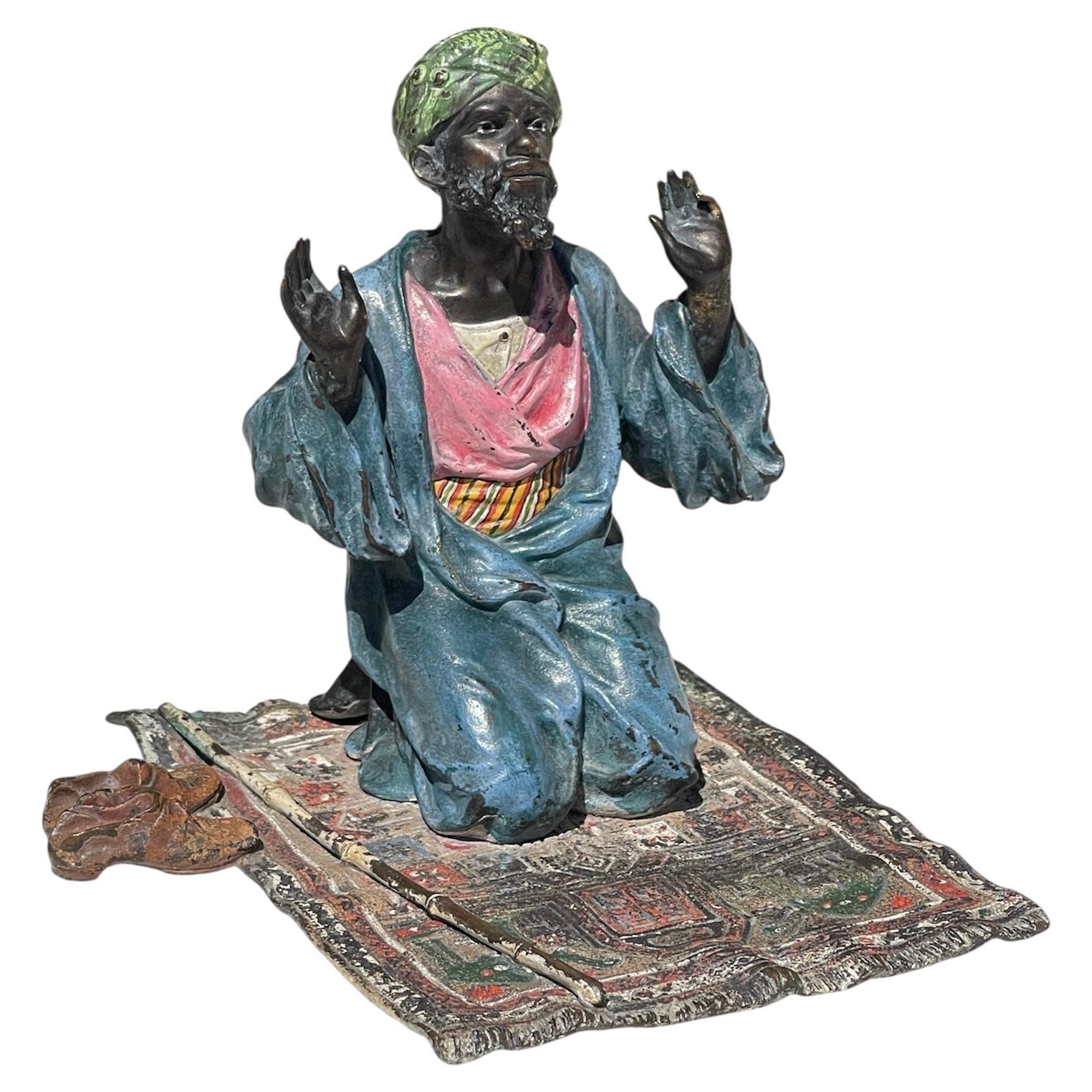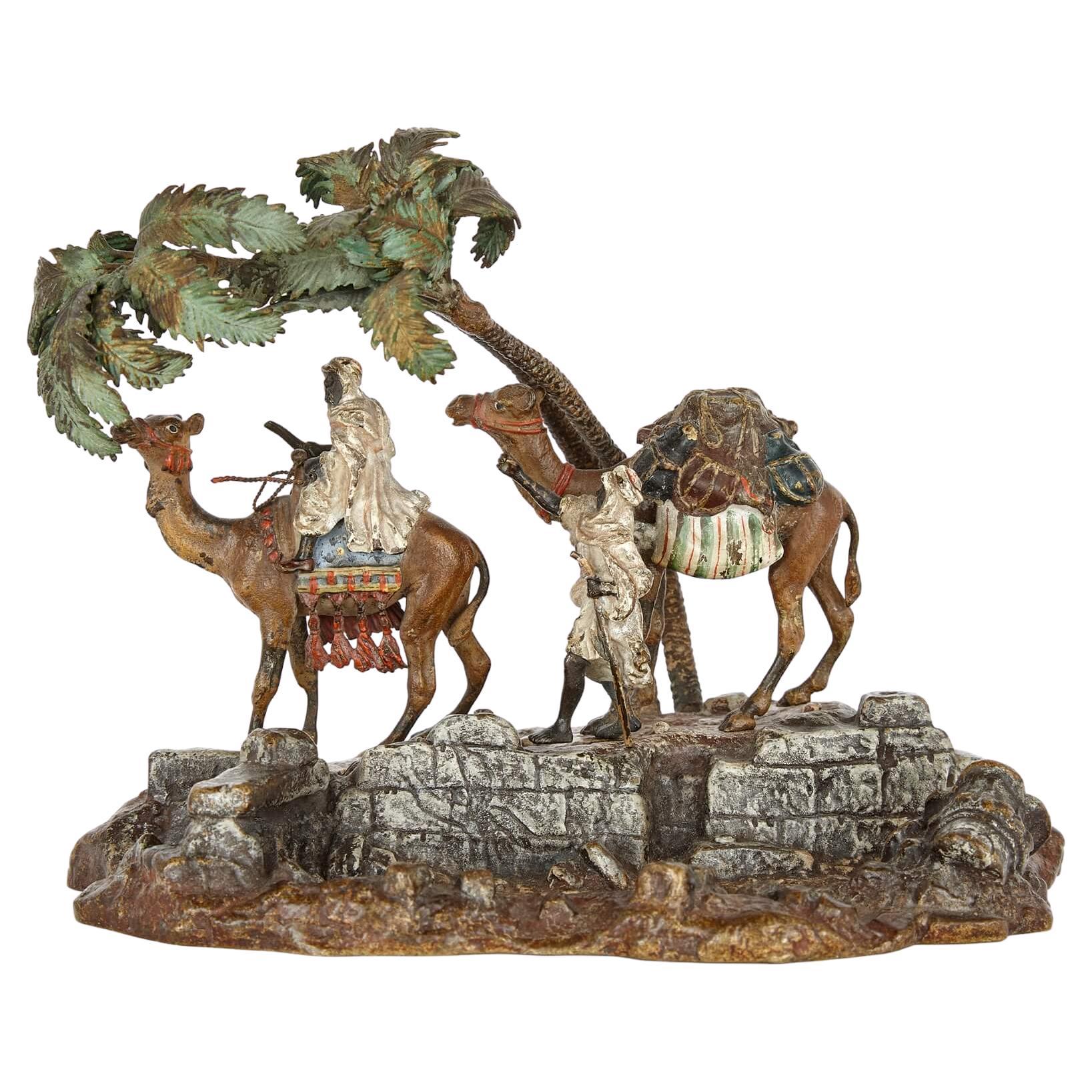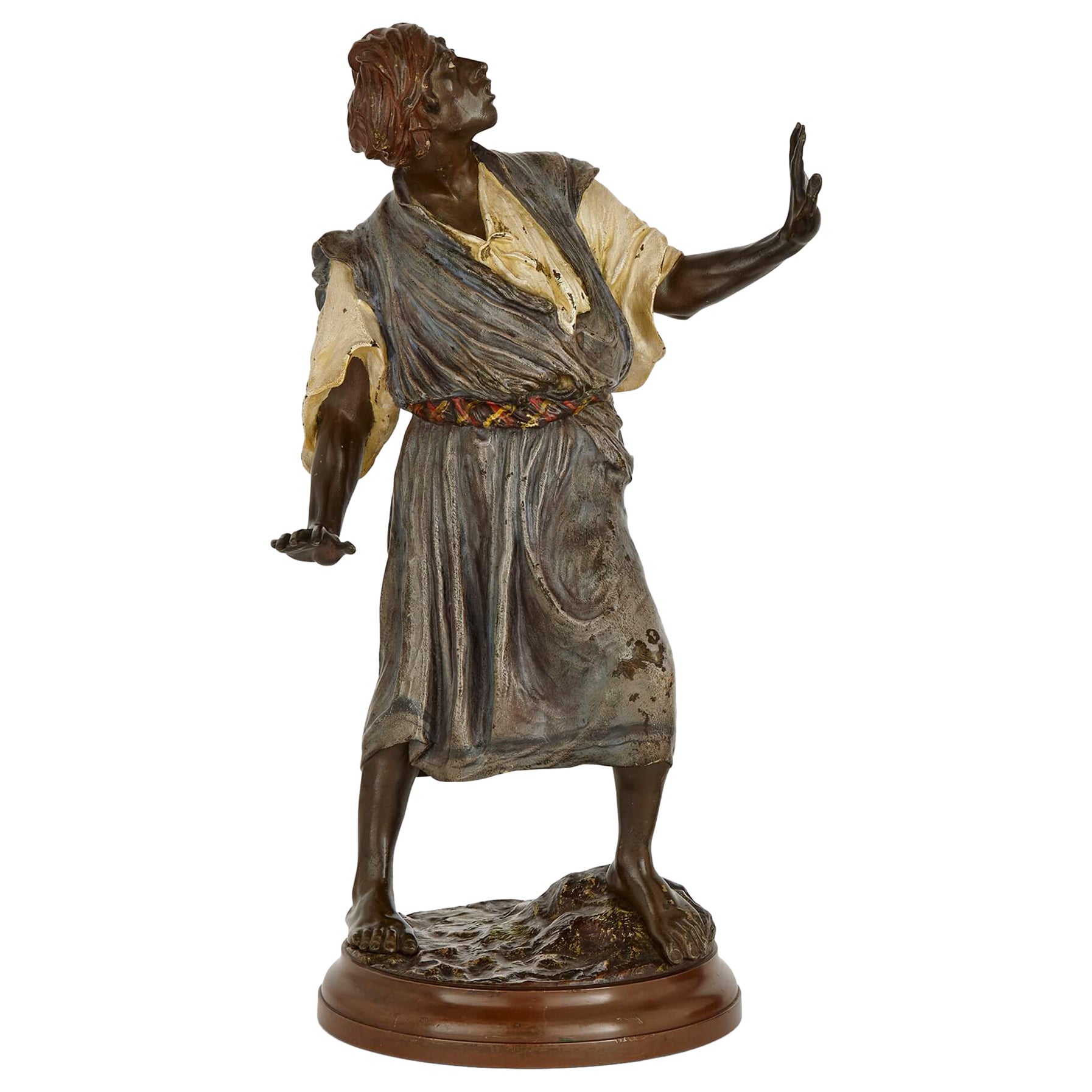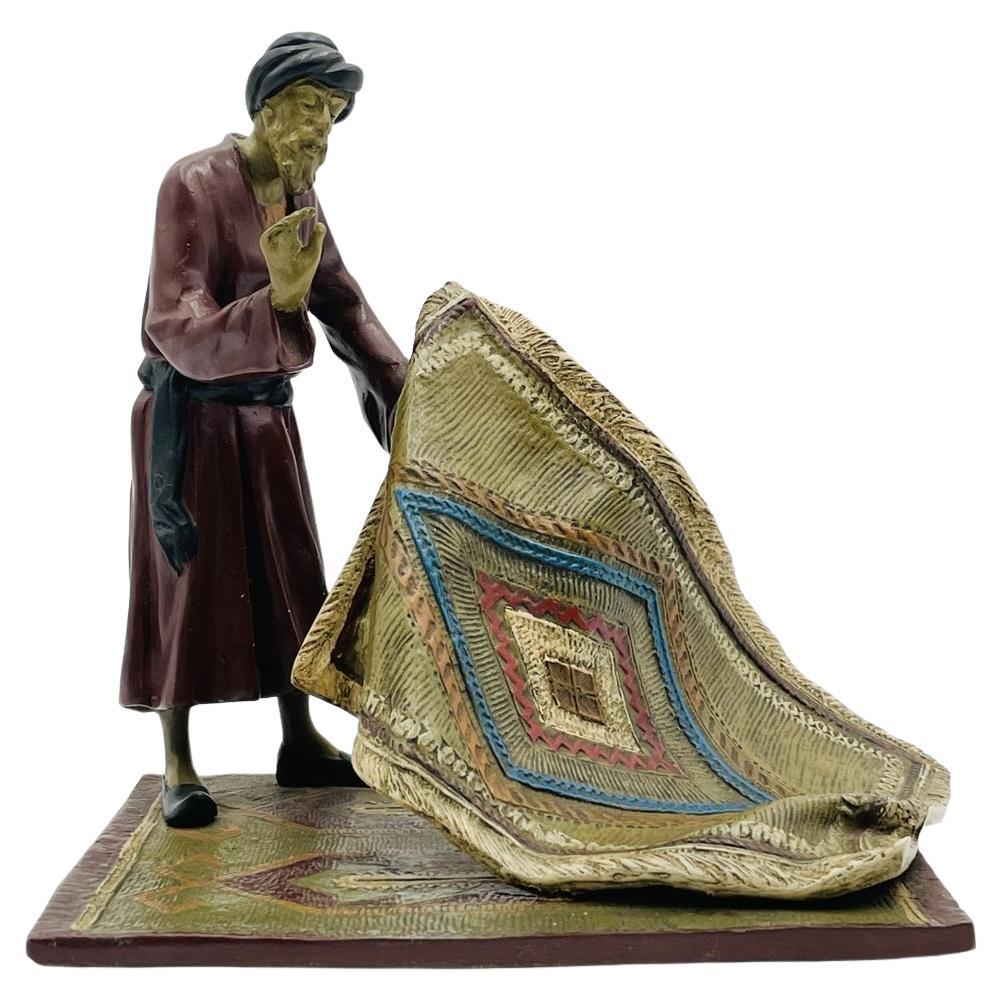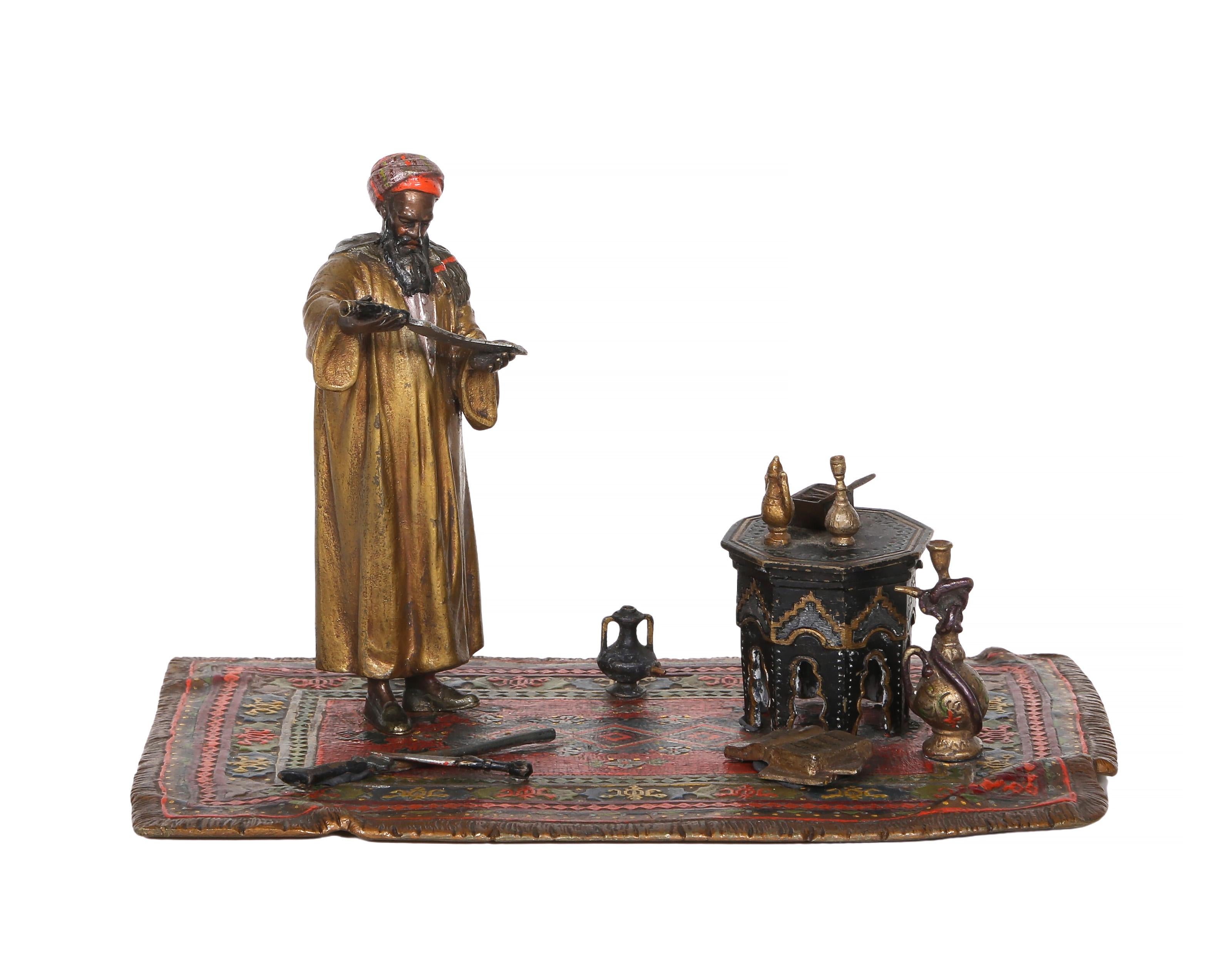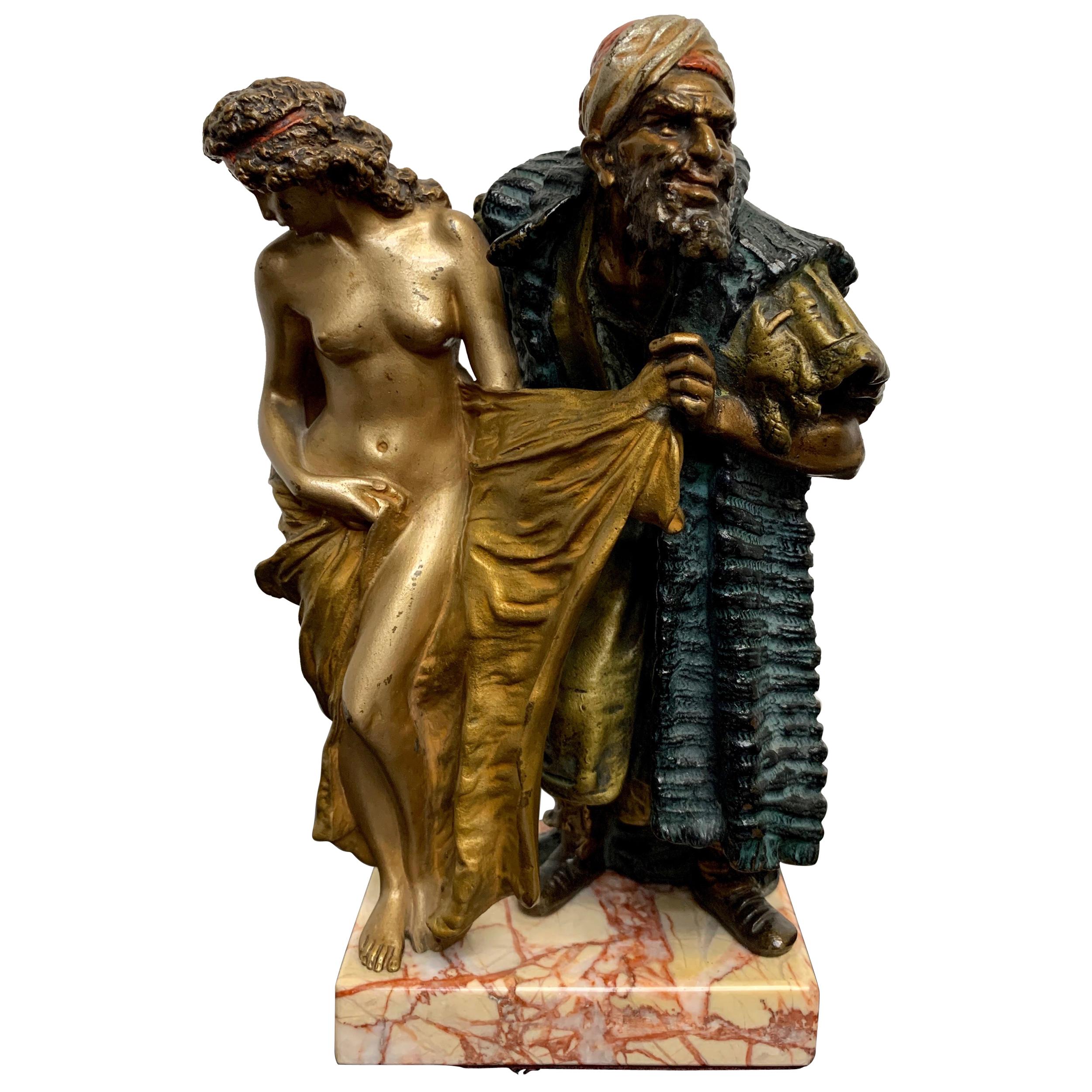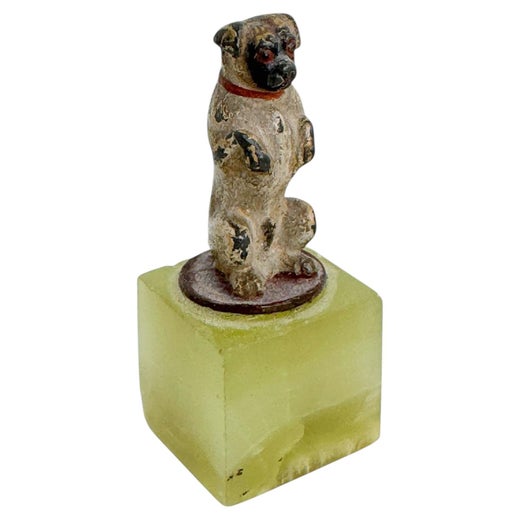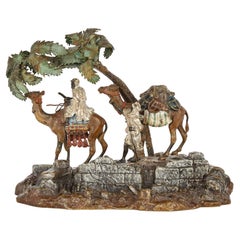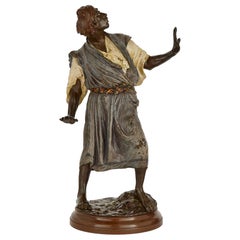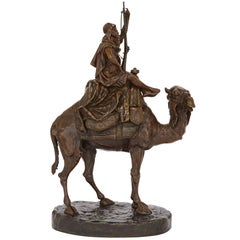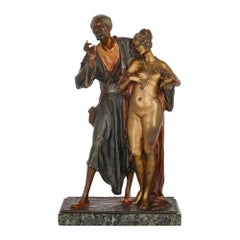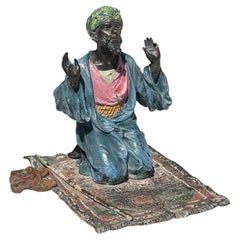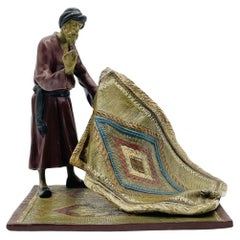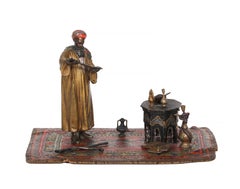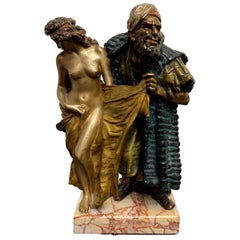Large Orientalist Bronze Group by Bergman
About the Item
- Creator:Franz Xaver Bergman (Bergmann) (Maker)
- Dimensions:Height: 10.63 in (27 cm)Width: 7.09 in (18 cm)Depth: 11.03 in (28 cm)
- Materials and Techniques:Bronze,Cold-Painted
- Place of Origin:
- Period:
- Date of Manufacture:circa 1910
- Condition:
- Seller Location:London, GB
- Reference Number:Seller: 8310b1stDibs: LU956326942332
Franz Xaver Bergman (Bergmann)
Globally celebrated Austrian metal worker Franz Xaver Bergman(n) is known for his bronze statuettes and figurines, which are rich with personality and alive with color.
Bergmann's father, Franz Bergmann, Sr., apprenticed under Josef Ott and became a professional caster and chaser, who moved from Gablonz, Bohemia, to Vienna in 1860, where he opened a small foundry. There, he put what he’d learned about naturally patinating bronzes and created popular figurines and sculptures. At the turn of the century, Bergmann inherited the company from his father and opened a second foundry.
At the Bergmann Foundry, Franz Xaver Bergmann created numerous bronze figures, employing a technique now known as “cold painting” that has been lost to time. Bergmann’s early works were based on his father’s molds. He hired local workers to cast his own designs.
Bergmann’s works encompass an immense variety of subject matter. His foundry created bronzes of humanized animals, mythological creatures and animals in natural poses. Many of his statuettes are representative of his fondness for faraway lands and peoples, with a great number of his works depicting Native American, Asian, Persian and Arabian cultures. He's also known to have created some risqué Art Nouveau figurines — to some collectors, the Bergmann Foundry is known for its sculptures of women in various sensuous poses wearing ingeniously executed removable articles of bronze clothing.
Franz Xaver Bergmann’s recognized maker’s mark was a capital “B” inside a scrolled horseshoe, but Bergmann would place the pseudonym "Nam Greb" — the reverse of his last name — on his racier pieces, to keep his more conservative and conventional customers from connecting his name to those works.
Bergmann had to close his company’s doors in 1930 owing to the financial strains that came with the Great Depression. He died in 1936 before the company could open again. His son, Robert Bergmann, reopened the foundry many years later and continued to own and operate it until his death in 1954. Karl Fuhrmann & Co. purchased what remained of the company after Robert died. Bergmann’s cast-bronze figures endure to this day and are highly prized by collectors and enthusiasts of figurative art.
Find antique Franz Xaver Bergmann decorative objects, lighting and other works on 1stDibs.
- ShippingRetrieving quote...Shipping from: London, United Kingdom
- Return Policy
More From This Seller
View AllAntique Early 1900s Austrian Moorish Figurative Sculptures
Bronze
Early 20th Century Austrian Islamic Figurative Sculptures
Bronze
Antique Late 19th Century Italian Figurative Sculptures
Bronze
Early 20th Century Austrian Figurative Sculptures
Bronze
Antique Late 19th Century French Belle Époque Figurative Sculptures
Bronze
Antique Late 19th Century French Figurative Sculptures
Bronze
You May Also Like
Antique 19th Century Austrian Figurative Sculptures
Bronze
Vintage 1950s Austrian Moorish Figurative Sculptures
Bronze
Early 1900s Romantic Figurative Sculptures
Bronze
Early 20th Century Austrian Figurative Sculptures
Marble, Bronze
Antique 19th Century French Figurative Sculptures
Bronze
Vintage 1930s Austrian Figurative Sculptures
Belgian Black Marble, Bronze
Read More
Exquisite Sèvres Porcelain Brings More to the Table than Dishes
The elegant ceramics represent the best of French artistry and innovation.
What Is Ormolu, and Why Are We Talking about It?
This golden material glamorized neoclassical furnishings and transformed upper-crust sitting rooms from France to Philadelphia in the 18th and early 19th centuries.
